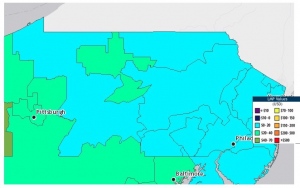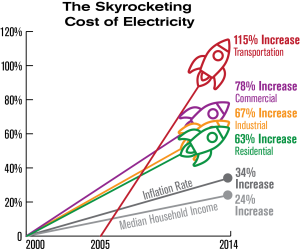Various techniques for power age can cause a wide range of expenses, which can be partitioned into three general classes:
1) discount expenses, or all expenses paid by utilities related to procuring and disseminating power to purchasers,
2) retail costs paid by purchasers, and
3) outer expenses, or externalities, forced on society.
Discount costs incorporate beginning capital, activities and upkeep (O&M), transmission, and expenses of decommissioning. Contingent upon the neighborhood administrative climate, some or all discount expenses might be gone through to purchasers. These are expenses per unit of energy, regularly addressed as dollars/megawatt hour (discount). The Odessa Electricity Rates estimations likewise help states in pursuing choices with respect to energy strategy. On normal the levelized cost of power from utility-scale sunlight-based power and coastal breeze power is not exactly from coal and gas-terminated power stations, yet this shifts a ton relying upon the area.

Cost Measurements
- Levelized cost of power
The levelized cost of power (LCOE) is a metric that endeavors to look at the expenses of various techniques for the power age consistently. However LCOE is in many cases introduced as the base steady cost at which power should be offered to earn back the original investment over the lifetime of the task, such an expense examination requires suspicions about the worth of different non-monetary expenses (ecological effects, nearby accessibility, others), and is in this manner questionable. Generally determined, LCOE is the net present worth of all costs over the lifetime of the resource partitioned by a properly limited absolute of the energy yield from the resource over that lifetime.
- Levelized cost of capacity
The levelized cost of capacity (LCOS) is practically equivalent to LCOE yet applied to energy capacity innovations like batteries. Despite the innovation, in any case, stockpiling is nevertheless an optional wellspring of power reliant upon an essential wellspring of age. In this way, genuine expense bookkeeping requests that the expenses of both essential and optional sources be incorporated when the expense of capacity is contrasted with the expense of creating power progressively to fulfill needs. An expense factor exceptional to stockpiling is misfortunes that happen because of innate shortcomings of putting away power, as well as expanded CO2 emanations assuming any part of the essential source is under 100 percent sans carbon.
- Levelized kept away from the cost of power
The metric levelized kept away from the cost of energy (Ribbon) addresses a portion of the deficiencies of LCOE by considering the financial worth that the source gives to the framework. The monetary worth considers the dispatchability of an asset, as well as the current energy blend in a locale. In 2014, the US Energy Data Organization suggested that levelized expenses of non-dispatchable sources like breeze or sun powered be contrasted with the “levelized kept away from the cost of energy” (Trim) as opposed to the LCOE of dispatchable sources like petroleum products or geothermal. Trim is the stayed away from costs from different sources partitioned by the yearly result of the non-dispatchable source. The EIA estimated that fluctuating power sources probably won’t stay away from capital and support expenses of reinforcement dispatchable sources.
- Esteem changed the levelized cost of power
The worth changed levelized cost of power (VALCOE) is a measurement contrived by the Global Energy Organization which incorporates both the expense of the power and the worth of the power framework. For instance, a similar measure of power is more important during a period of pinnacle interest. Anyway, VALCOE doesn’t consider future changes to the power framework, for instance, the expansion of significantly more sun-based power could diminish noontime esteem yet the present VALCOE doesn’t consider that.
